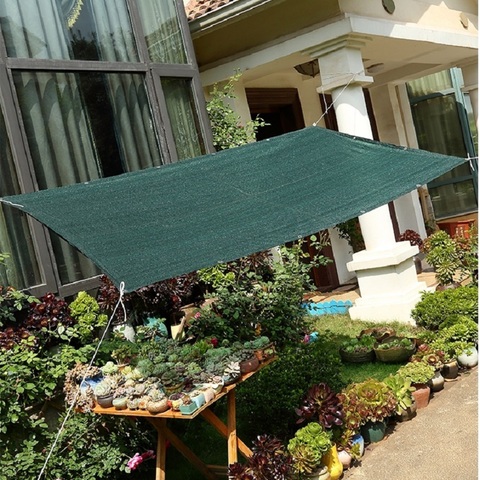Maximizing Plant Health: A Comprehensive Guide to Garden Shade Cloths
In every gardener's journey, protecting plants from the harsh effects of sunlight is crucial to maintaining a healthy and thriving garden. While sunlight is essential for photosynthesis, too much exposure, especially during peak summer months, can stress plants, leading to wilting and poor growth. This is where garden shade cloths come in handy. Designed to provide the right amount of shade, these cloths are an effective solution to shielding your plants from excessive heat and harmful UV rays. In this comprehensive guide, we’ll explore everything you need to know about garden shade cloths, including their types, benefits, and how to choose the right one for your garden.

What Are Garden Shade Cloths?
Garden shade cloths are specialized fabrics designed to protect plants from intense sunlight and heat. Made from durable materials like polyethylene or knitted mesh, these cloths block out a percentage of sunlight, allowing plants to receive just the right amount of light they need to grow. They come in various shade percentages, typically ranging from 30% to 90%, meaning they can block out 30% to 90% of the sunlight depending on the cloth you choose. This feature makes them incredibly versatile, catering to different plant needs and garden environments. The primary benefit of garden shade cloths is UV protection, which is vital for preventing sunburn and heat stress in plants, ensuring they remain healthy and productive.
Types of Garden Shade Cloths
Garden shade cloths are available in various types, each designed to cater to specific gardening needs. The two main categories are knitted and woven shade cloths. Knitted shade cloths are lightweight and flexible, making them easy to handle and install. They are resistant to fraying, which adds to their durability. On the other hand, woven shade cloths are heavier and offer more robust protection, often used in areas with intense sunlight. The shade percentage is another critical factor to consider. For instance, a 30% shade cloth is suitable for plants that require a lot of sunlight, such as tomatoes, while a 70% shade cloth is ideal for shade-loving plants like ferns. Understanding these types and their applications will help you choose the right shade cloth for your garden.
Benefits of Using Garden Shade Cloths
Using garden shade cloths offers numerous benefits that contribute to healthier plants and more productive gardens. Firstly, they protect plants from excessive heat and UV rays, which are the primary causes of sunburn and stress in plants. This protection ensures that your plants maintain optimal growth conditions, even during the hottest months. Secondly, shade cloths help in reducing water evaporation from the soil, which means your garden requires less frequent watering, saving both time and resources. Additionally, by regulating the amount of sunlight that reaches your plants, shade cloths can extend the growing season, allowing for a more prolonged harvest. For delicate plants, especially seedlings and young transplants, shade cloths provide a gentler environment that encourages robust growth.
How to Choose the Right Shade Cloth for Your Garden
Choosing the right garden shade cloth involves considering several factors, such as your local climate, the types of plants you are growing, and your garden’s layout. The first step is to assess the sunlight requirements of your plants. For sun-loving plants, opt for a lower shade percentage, while shade-loving plants will benefit from higher percentages. Another important consideration is the color of the shade cloth. Darker colors tend to absorb more heat, which might be beneficial in cooler climates, whereas lighter colors reflect more sunlight, keeping the area underneath cooler. The material of the shade cloth is also essential; knitted cloths are recommended for most gardens due to their flexibility and ease of installation.
Installing Garden Shade Cloths: A Step-by-Step Guide
Installing garden shade cloths is a straightforward process that can significantly enhance your garden’s microclimate. Start by measuring the area you wish to cover, ensuring that the shade cloth will fit comfortably without overstretching. Next, secure the cloth to a frame or structure, ensuring it is taut but not overly tight. If you’re using poles or stakes, ensure they are sturdy enough to withstand wind and other elements. Attach the cloth using clips or ties, making sure it is evenly spread across the area. Regularly check the installation for any signs of wear and tear, and make adjustments as needed to maintain optimal coverage.
Conclusion and Call-to-Action
Garden shade cloths are an invaluable tool for any gardener looking to protect their plants from the harsh effects of sunlight. By choosing the right shade cloth and installing it correctly, you can ensure your plants thrive even in challenging weather conditions. Take the time to assess your garden’s needs and explore the various options available to find the perfect shade cloth for your setup. Ready to take your gardening to the next level? Explore our wide range of garden shade cloths today and give your plants the protection they deserve!

